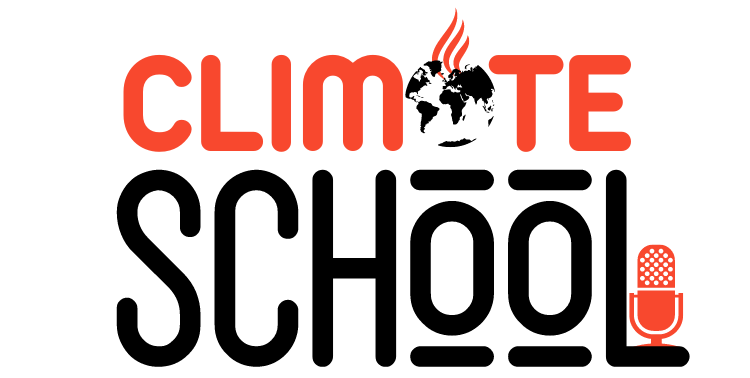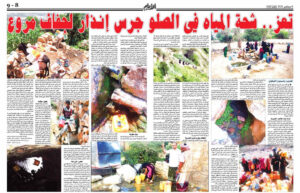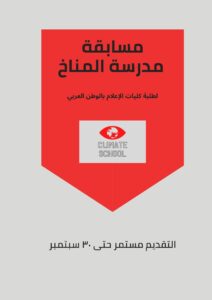Written by: Aisha Ould Habib
Under the title “Environmental Journalism and the Right to Access Information,” a new guide was issued targeting journalists within the framework of the Article 19 Organization’s project, North Africa and Middle East Office, in cooperation with the University of Oslo in Norway. The guide was prepared by Tunisian journalist Hanan Zubis.
This guide targets journalists and journalism students interested in covering environmental and climate issues and learning how to practice them in light of the major challenges posed by climate change in the world, especially in the Middle East and North Africa region.
The guide reviews the most important international agreements binding on countries to confront climate change and focuses on the importance of the right to access environmental information to enable citizens to participate in decision-making regarding protecting the planet.
The guide also provides a set of open sources, tools and databases to obtain reliable data on topics related to pollution, environmental risks, international and national policies for the use of renewable energies and financing environmental adaptation efforts.
This guide also provides some guidelines for choosing environmental topics, good angles to present them, and how to write an environmental journalistic article that takes into account at the same time the scientific aspect, scrutinizing the information, and focusing on the human side of the story.
The guide seeks to provide the necessary theoretical and applied knowledge, tools and skills necessary to effectively use the right to access information and analyze the effects of climate change, in order to enable journalists, environmental rights defenders and others to express his/her ideas and provide reliable reports and analyzes on environmental issues. , which contributes to conveying environmental messages, enhancing public awareness of issues surrounding the environment, and achieving positive change in this field.
The guide also includes a set of tips for journalists on how to find environmental experts and how to network with environmental journalists to conduct cross-border investigations.
It also explains how to write good environmental journalism reports and gives examples. At the end, it contains a list of environmental terms to facilitate journalists’ access to and understanding of this world.
This guide focuses on the importance of the right to access environmental information to facilitate the journalist’s work in finding good and reliable sources for his articles and investigations so that knowledge and benefit can be brought to the public.
The completion of this guide comes in a context in which the severity of climate change is increasing in the Middle East and North Africa region, which has affected many vital rights, especially for fragile and marginalized groups, such as the right to water, the right to health, and the right to a decent life. This context also witnesses an increase in the number of countries that have adopted or are in the process of adopting policies and laws that seek to enshrine the right to access information.
Which makes this guide achieve two dual goals by linking the right to access information on the one hand to environmental issues and their impact on human rights on the other hand.
Hanan Zabis is a Tunisian investigative journalist and a trainer in scientific journalism, environmental and health journalism, and has won many Arab and international awards, including the Samir Kassir Award for Freedom of the Press (2014) and the Raif Badawi Award for Brave Journalists (2019).
The guide can be viewed through this Link





